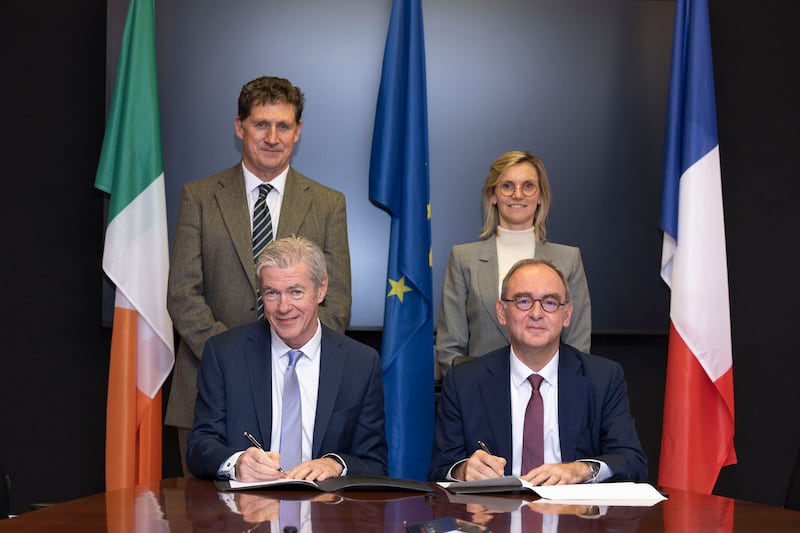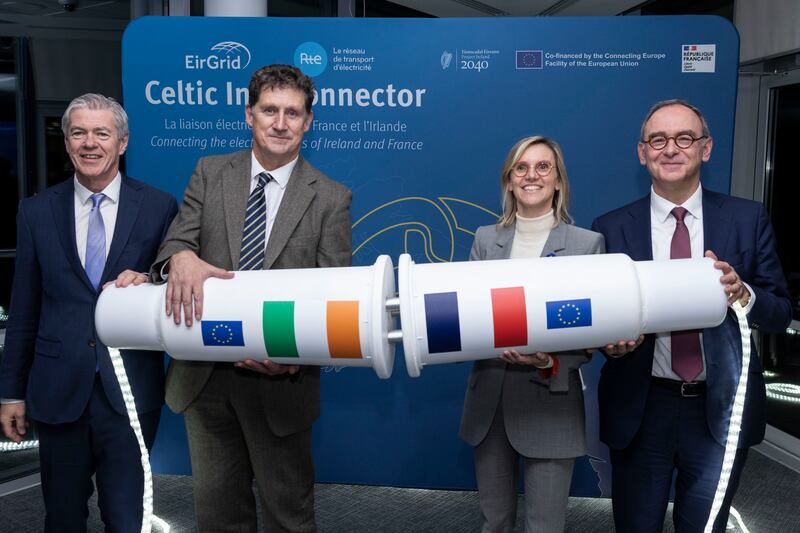With construction work now under way on the €1.6 billion Celtic Interconnector, the joint venture partners behind the project have entered into an agreement that aims to strengthen energy security, build on an affordable energy system and diversify energy supply in Europe.
The memorandum of understanding (MOU) between French transmission system operator (TSO) Réseau de Transport d’Électricité (RTE) and EirGrid was signed in Dublin earlier this month. The Cooperation on Offshore Energy Interconnection agreement marks the deepening of the existing relationship between the two organisations and is a statement of a shared ambition to work together on grid and system development perspectives to harness the potential abundant offshore renewable energy resources. A joint working group will be established to progress these ambitions.
“Low carbon, renewable energy is the future,” says EirGrid chief infrastructure officer Michael Mahon. “We need it for our climate, for our economic success, and for generations to come. This signing not only shows a shared commitment to decarbonising our power systems, but also, Ireland’s ambition and commitment to be a world leader in renewable energy.

“We are right up there with the best around the world, but we are also looking to other countries for expertise, and have been working closely with RTE, sharing our expertise and gaining new insights from them,” he continues. “Building on this successful partnership to date, we look forward to exploring opportunities for further interconnection, further exchange of expertise and putting in place a strong framework to help us achieve our climate ambitions.”
RM Block
Speaking at the signing of the agreement, RTE’s Xavier Piechaczyk said: “This partnership aims to strengthen the co-operation between RTE and EirGrid with regard to the planning and development of the energy generation and the offshore grid network, which will be one of the key pillars required for the fastest possible establishment of a decarbonised European electricity network to which the EU is committed.”
According to EirGrid, the signing of the MOU signifies a joint co-operation between both TSOs in accordance with the European Union regulatory framework to improving security of supply, bringing diversification of energy sources, contributing to national energy targets, ambitions for renewable energy and creating new development opportunities for both Ireland’s and France’s economies.
More generally, the agreement reflects the ambition – supported by the work of the European Network of Transmission System Operators (ENTSO-E), to promote offshore projects in the Atlantic Ocean involving Ireland, Spain, Portugal and France. It is estimated that these projects could represent an offshore wind production capacity of 26GW in 2040 and 54GW in 2050.
Another interesting objective is to assess the long-term interest in a new type of interconnector between Ireland and France. The Celtic Interconnector is a sub marine power cable which will link the electricity grids of both countries and enable power to flow in either direction as demand and supply availability dictate. The connection, which is scheduled for completion in 2026, will link the existing electricity substation located in Knockraha in east Cork to the substation in La Martyre, in Finistère, France.
A new hybrid type of interconnector would facilitate connections to offshore wind farms in addition to enabling electricity exchange between the two countries.

Mahon explains the importance of interconnection and international collaboration. “One of the challenges we have as we increase the amount of renewables on the system is that there might be lots of wind one day and very little the next. We need backup when it drops off and this project, and a commitment to exploring others, will help provide that. We will also have the benefit of being able to export energy when we have a surplus in the system, when the Celtic Interconnector becomes operational.
“Projects like the Celtic Interconnector, and scope for further critical infrastructure as we continue to partner with our French colleagues, will help Ireland maximise the potential of our offshore wind resources,” he adds.
Meeting our own energy needs is just part of the story. “Ireland won’t be able to consume all that power and the best way to utilise it is to sell it to Europe,” Mahon points out. “The opportunities for this country as an exporter of energy are vast. At EirGrid we look forward to continuing to expand our outreach internationally as we lead the secure transition of our electricity grid to low carbon, renewable energy.”











